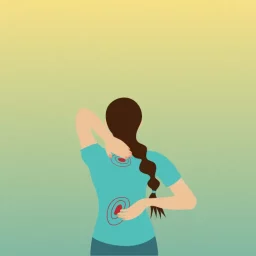Chiropractic care
Chiropractic is non-invasive, safe and gentle hands-on healthcare that focuses on the musculoskeletal (MSK) system. Doctors of Chiropractic (DC) use a manual approach to treatment while providing a diagnosis. They also offer preventive care for disorders related to the spine, pelvis, nervous system and joints.
Did you know that chiropractic is one of the largest regulated, primary-contact healthcare professions in Canada? More than 9,000 licensed chiropractors are practicing across Canada with over 5000 DCs practicing right here in Ontario. Globally, an estimated 100,000 chiropractors are practicing in 90 different countries.
History of Chiropractic
The actual word chiropractic stems from the Greek words “chiro” and “praktikos” meaning “done by hand.” Even more interesting, is the Canadian connection in the profession’s early history.
Daniel David Palmer, a Canadian living in the U.S. founded the Palmer School of Chiropractic in 1897. It is now known as Palmer College of Chiropractic where it remains today in Davenport, Iowa (Four of CURAVITA health team’s chiropractors attended Palmer College for their chiropractic education). The early years of the profession saw conflict between conventional medicine and this new approach. Kansas became the first U.S. state to recognize and license chiropractors in 1913. Alberta was the first province to license chiropractors in Canada in 1923 and Newfoundland was the last to license chiropractors in 1992. Until the 1960s, it was not uncommon for chiropractors to be jailed and fined for practicing without a licence.
Today, 4.7 million Canadians seek out Chiropractors for the treatment of MSK pain and dysfunction. In Ontario, almost 2.7 million patients rely on chiropractic care every year to help them live healthy, active lives.
Chiropractic Education
A chiropractor’s education covers the anatomy and physiology of the spine which is more extensive than other medical professionals. A key difference is that chiropractors are uniquely trained and qualified to diagnose issues concerning your spine, muscles and joints. They’re also qualified to diagnose nervous system conditions related to your spine, muscles and joints. To become a DC, and subsequently practise in Canada, students must first complete at least six to seven years of post-secondary education, including more than 4,200 hours of specialized chiropractic training.
In Canada, there are only two accredited chiropractic college/university programs. The Canadian Memorial Chiropractic College (CMCC), in Toronto, is an evidence-based leader in chiropractic education and research and offers a four-year second-entry undergraduate professional program leading to a Doctor of Chiropractic Degree. The Université du Québec à Trois-Rivières, in Quebec, offers the Doctor of Chiropractic program at Université du Québec à Trois-Rivières and is taught entirely in French and is the only program within the Quebec university system that delivers education and training for chiropractors.
Licencing exams
Many DCs practicing in Ontario attain their chiropractic education and training from an accredited chiropractic college in the United States or in other countries, such as Great Britain, France and Australia.
Following their formal education, graduates must then pass a national standardized regulatory exam to be eligible to practice in Canada and then provincial licensing examinations to become a Doctor of Chiropractic in their chosen Canadian province or territory.
Clinical specializations
Some chiropractors also pursue additional academic and practical education to specialize in clinical sciences and diagnostic imaging, pediatric, spinal stenosis, sports sciences, rehabilitation or even animal chiropractic care. Specialty chiropractic colleges in Canada include:
- College of Chiropractic Sciences (CCS)
- College of Chiropractic Orthopedists (Canada) CCOS(C)
- Chiropractic College of Radiologists (CCR)C., INC.
- Canadian Chiropractic Specialty College of Physical and Occupational Rehabilitation
- Royal College of Chiropractic Sports Sciences (Canada) (RCCSS(C))
Chiropractors in Ontario
Like other healthcare professions such as medicine, nursing and dentistry, chiropractic is governed by provincially-legislated regulatory and licensing authorities. Each provincial authority is responsible for granting a licence to practice chiropractic in their jurisdiction, establishing standards of practice, and protecting the public interest. The regulatory process includes peer review programs, continuing education requirements, investigating complaints, and disciplining practitioners who fail to meet provincial licensing standards.
In Ontario, the College of Chiropractors of Ontario (CCO) regulates chiropractors to ensure every patient receives safe and quality care. It was established by the Regulated Health Professions Act and the Chiropractic Act to serve as the legislated regulatory body for chiropractors in Ontario. Every chiropractor practicing in Ontario must be a registered member of CCO. All graduates from an accredited chiropractic program must first pass the Canadian Chiropractic Examining Board (CCEB) examinations, and then the CCO Legislation and Ethics examination before they are eligible to apply for a licence to practise in Ontario.
Like other regulated health professionals, a chiropractor’s training is ongoing. To keep their knowledge and skills up-to-date, practicing chiropractors must participate in continuing education with minimum yearly standards set by each provincial regulatory college.
When to see a chiropractor
Chiropractic care is a primary health care option for many MSK conditions, including neck, mid back, and low back pain. Most people don’t realize that chiropractors can also assess and treat extremity issues. Indeed, they also treat conditions of the foot, knee, wrist, and shoulder and dispense orthotics. Chiropractic can provide relief for patients with chronic conditions like arthritis and may complement or support medical treatment by relieving the MSK pain and dysfunction associated with other conditions.
MSK conditions include a wide range of disorders that can impact the bones, muscles, tendons, ligaments, joints and connective tissue. Almost 90% of Canadians suffer from MSK pain, which can negatively impact almost all aspects of daily life. The most common type of MSK pain affecting Canadians is low back pain. Consequently, LBP is also one of the most common reasons prompting patients to seek medical attention.
Care and treatment
Chiropractors may use a combination of treatments centred on the specific needs of each patient. The initial assessment includes taking a complete history and diagnosing the patient. After the initial assessment, a chiropractor will develop a care plan, recommend rehabilitative exercise, and other adjunct therapies, and may provide nutritional, dietary and lifestyle counselling.
Back pain is a complex problem and a significant contributing factor to long-term disability, absence from work and a large economic burden to all Canadians. A healthy spine contributes to a pain-free, active and healthy lifestyle.
If back pain is keeping you from going about your day-to-day and active living, consider chiropractic. Most people seeking services at CURAVITA can see a chiropractor for a consultation on the same day or the day after. Online booking is also available at both our locations. Contact us and schedule an appointment to get answers to your nagging pain. Call us today at our Byward Clinic at 613-860-8600 or our Glebe Clinic at 613-237-9000 to book an appointment with one of our healthcare providers.
Byward Market
Email: info.byward@curavita.com
Glebe
Email: info.glebe@curavita.com















